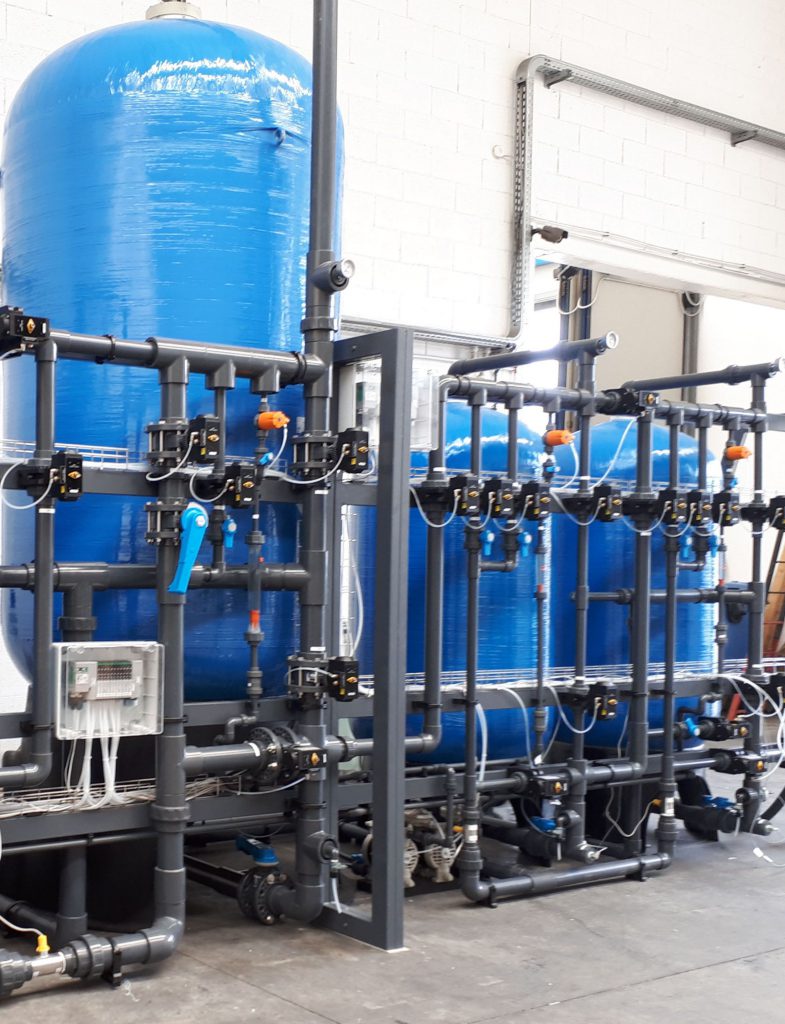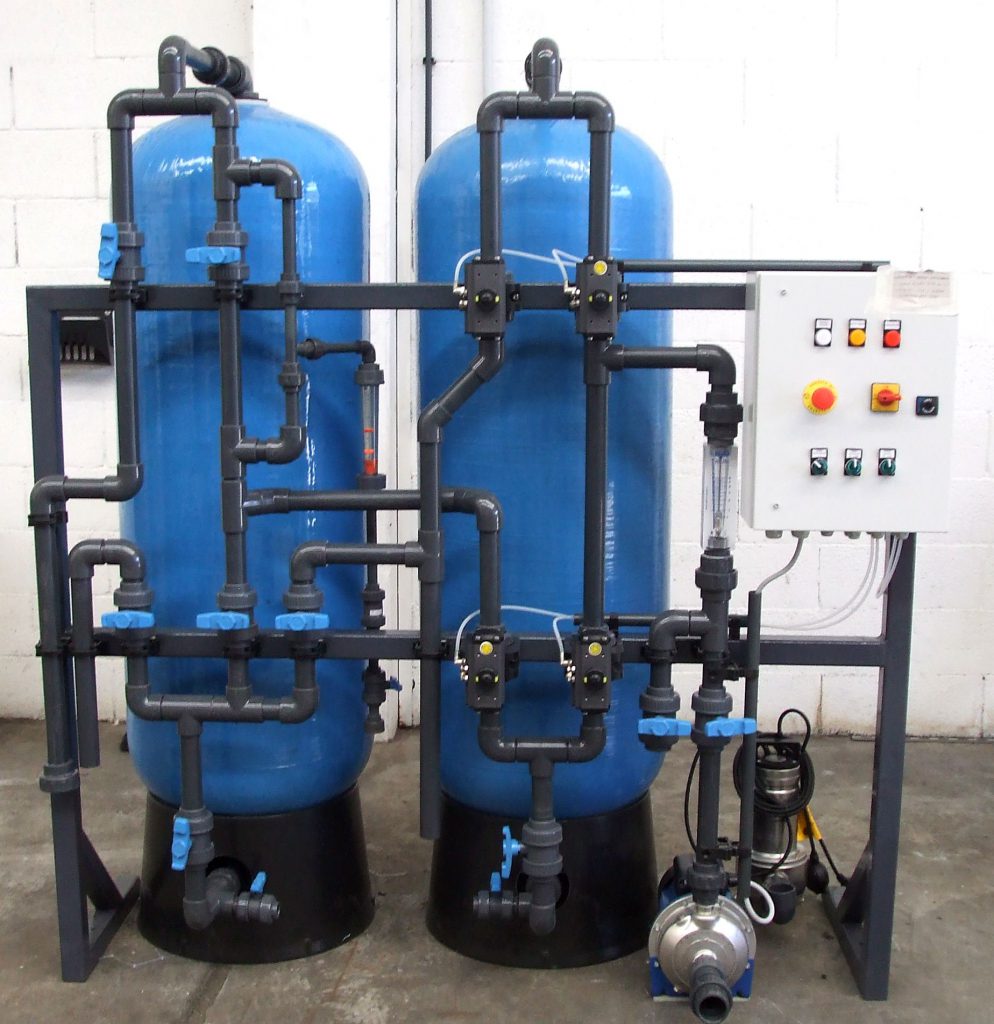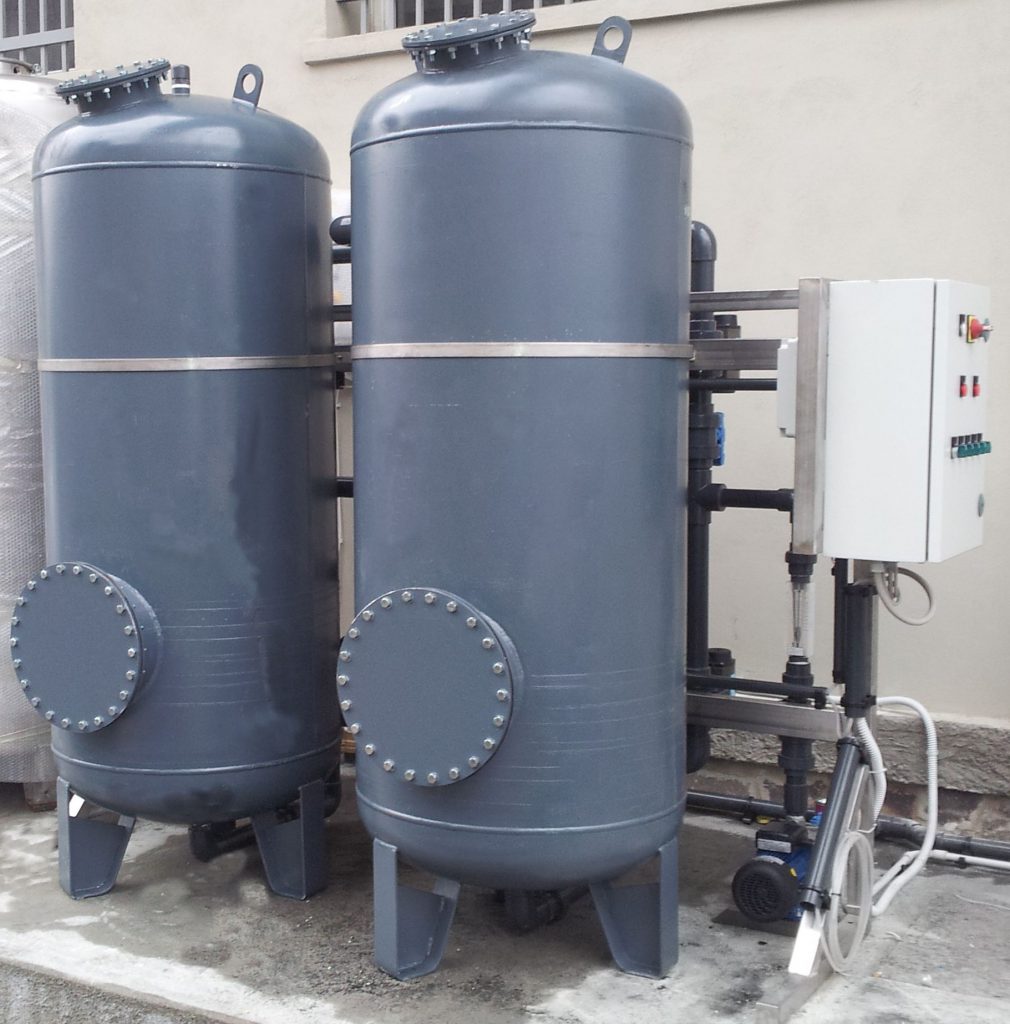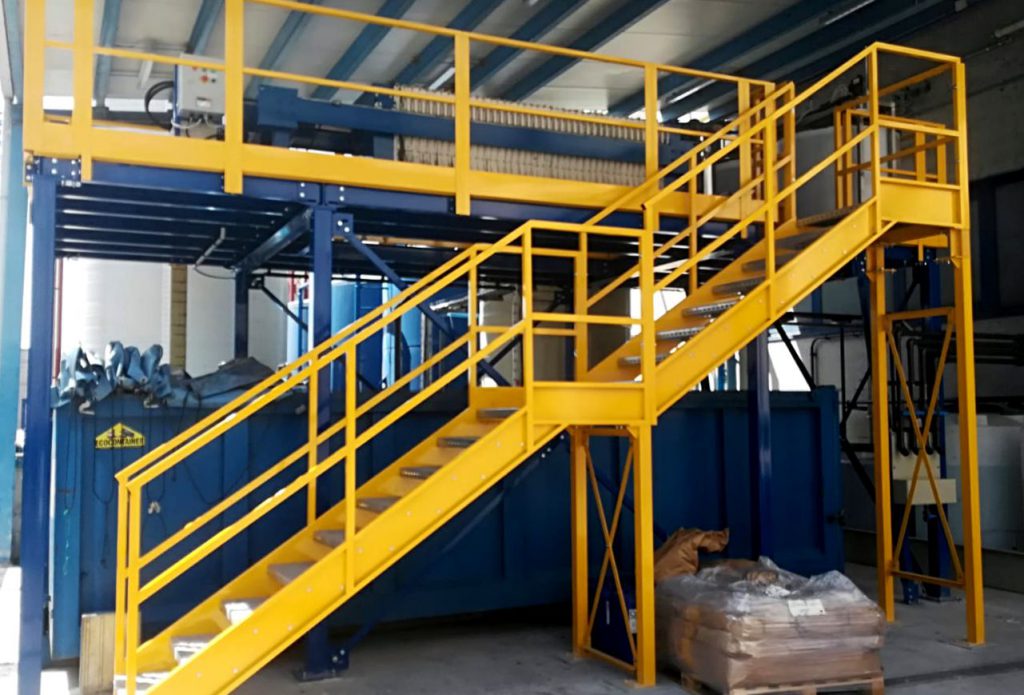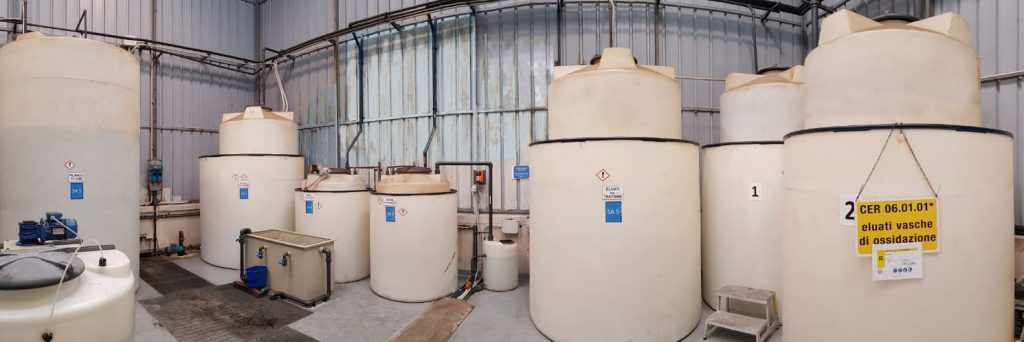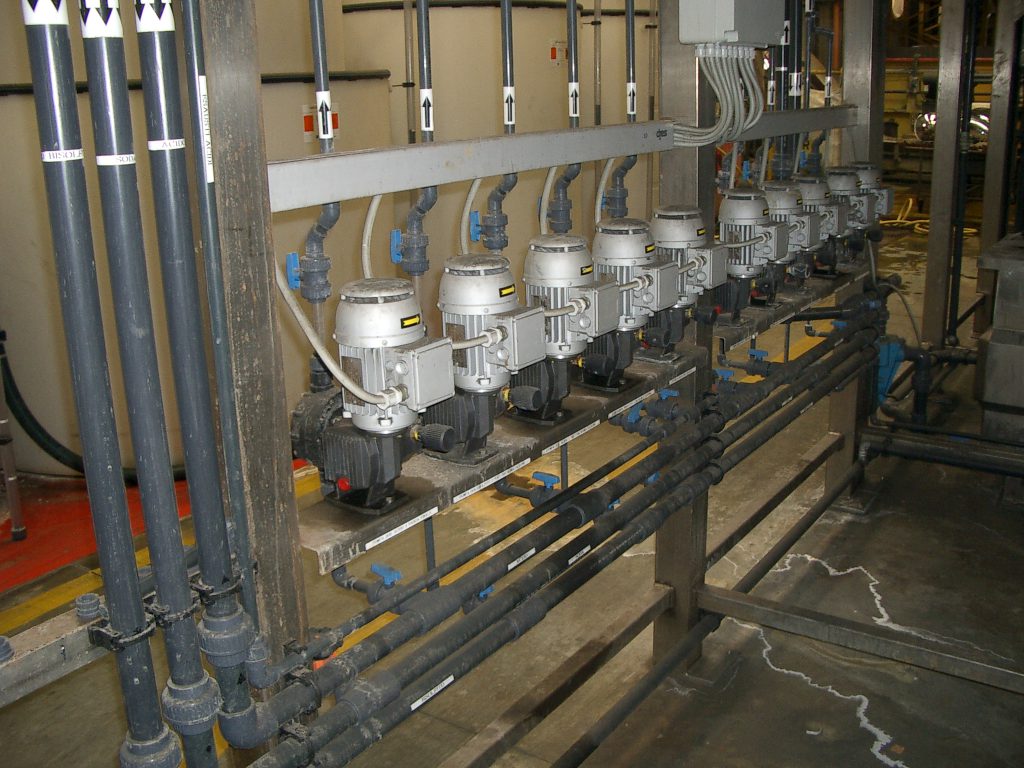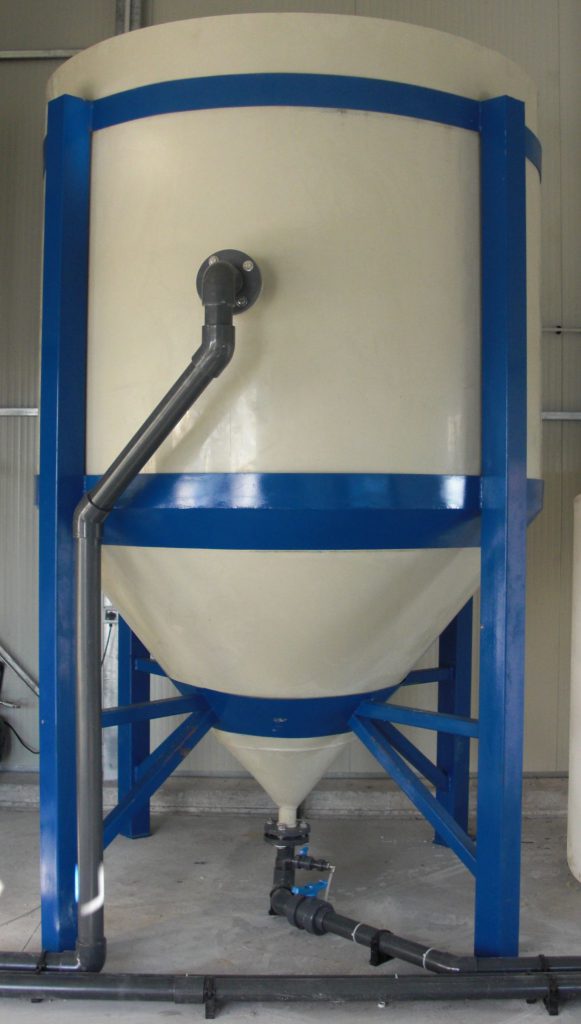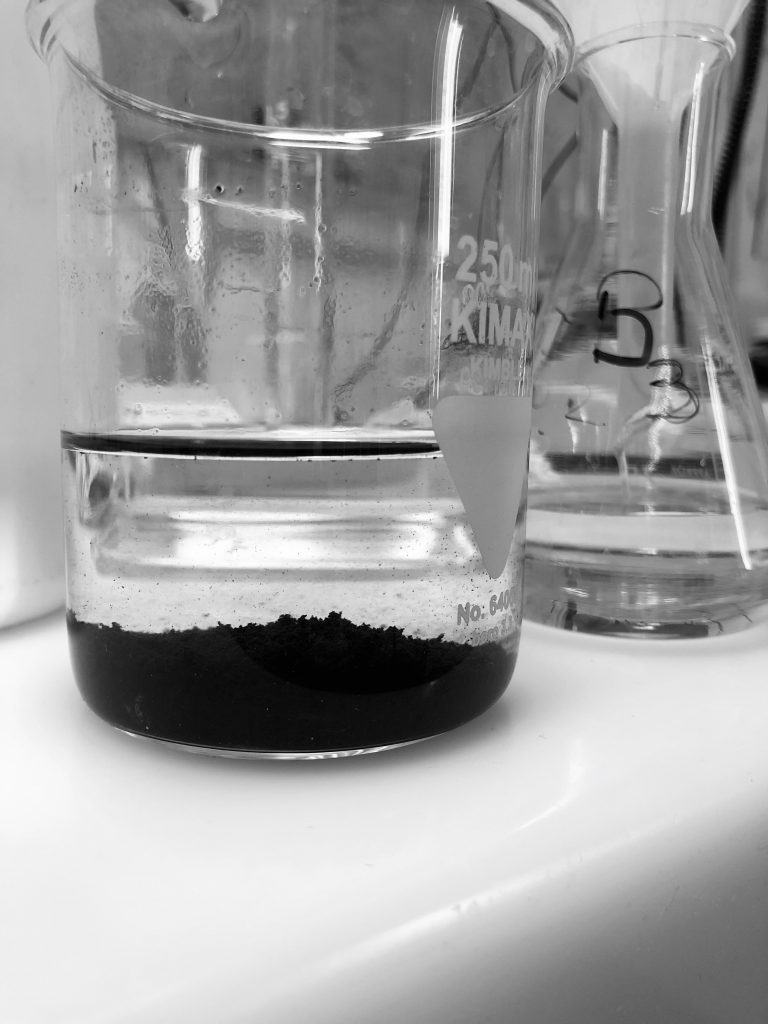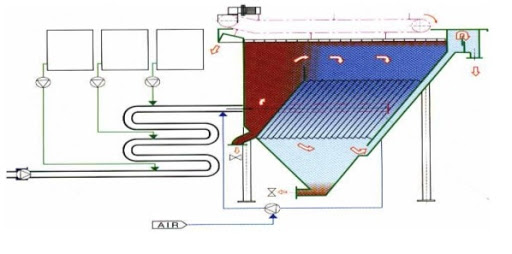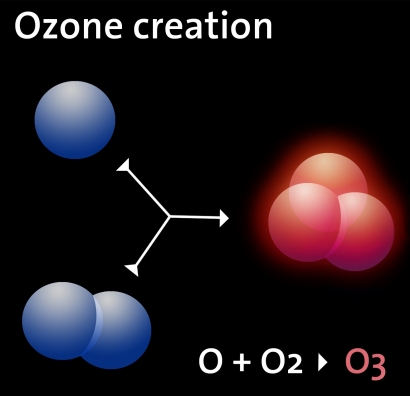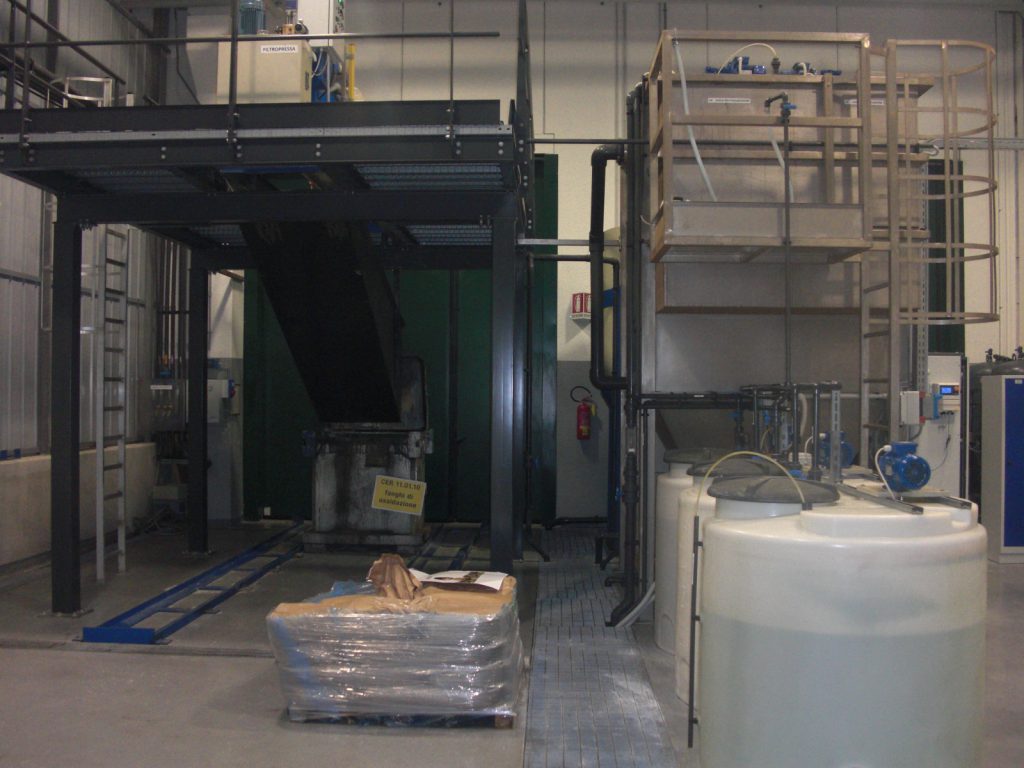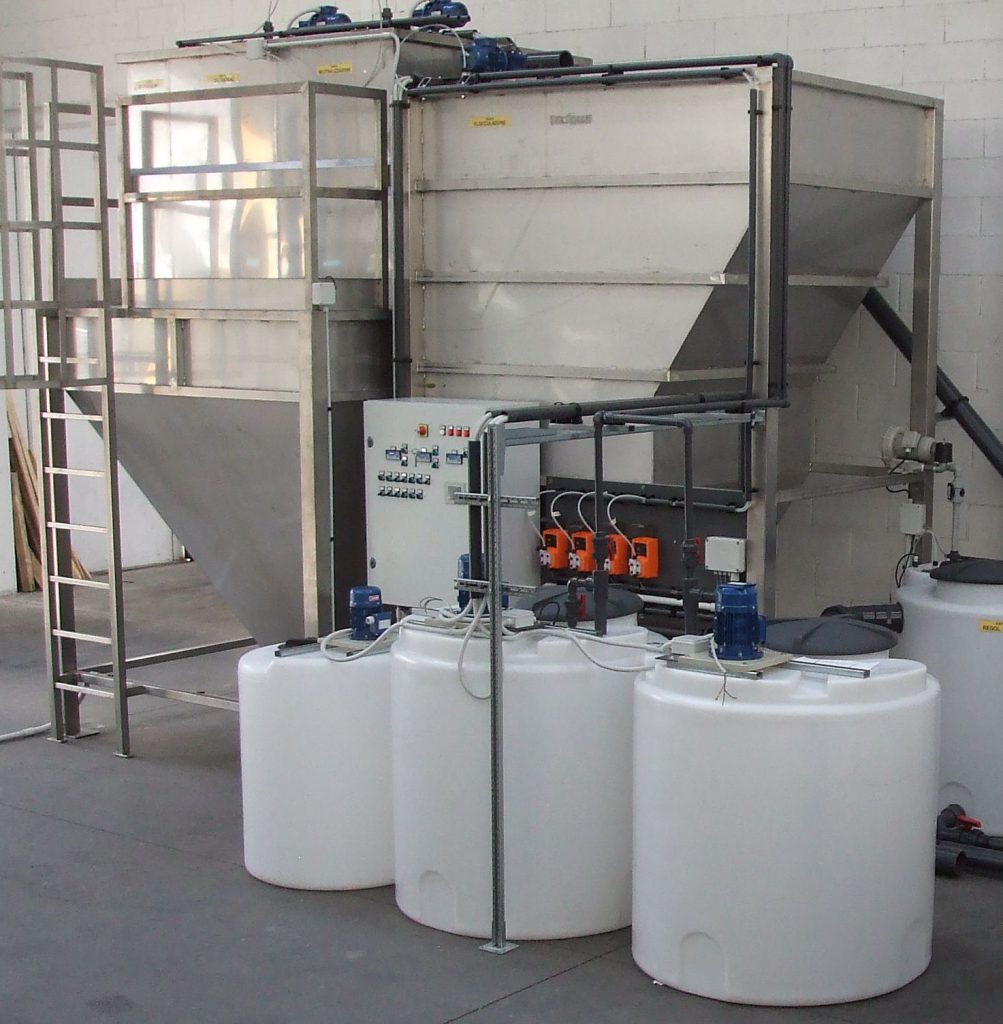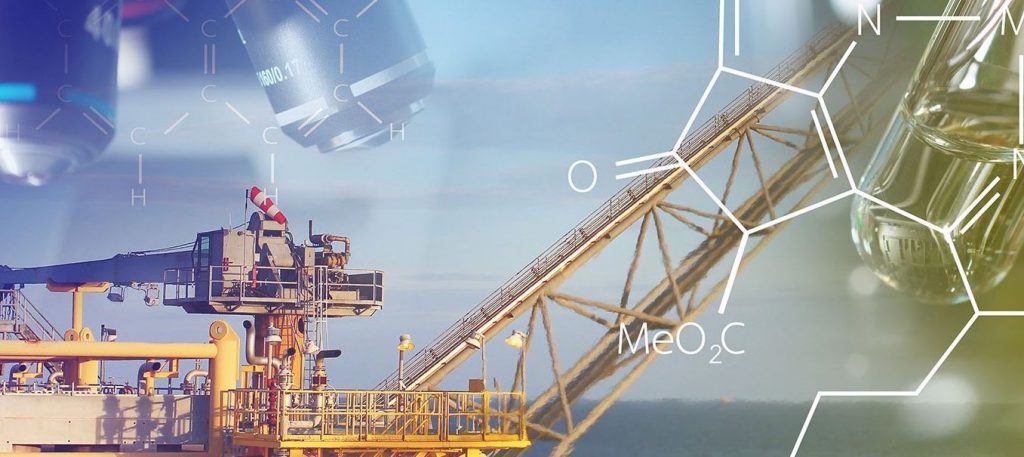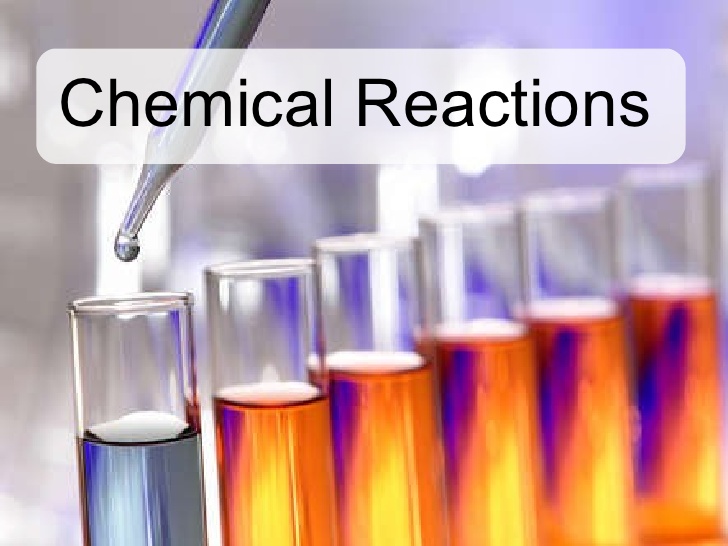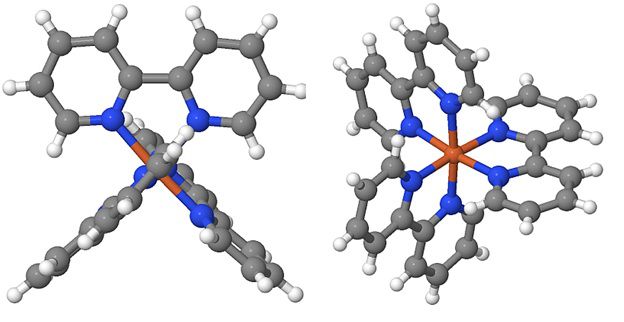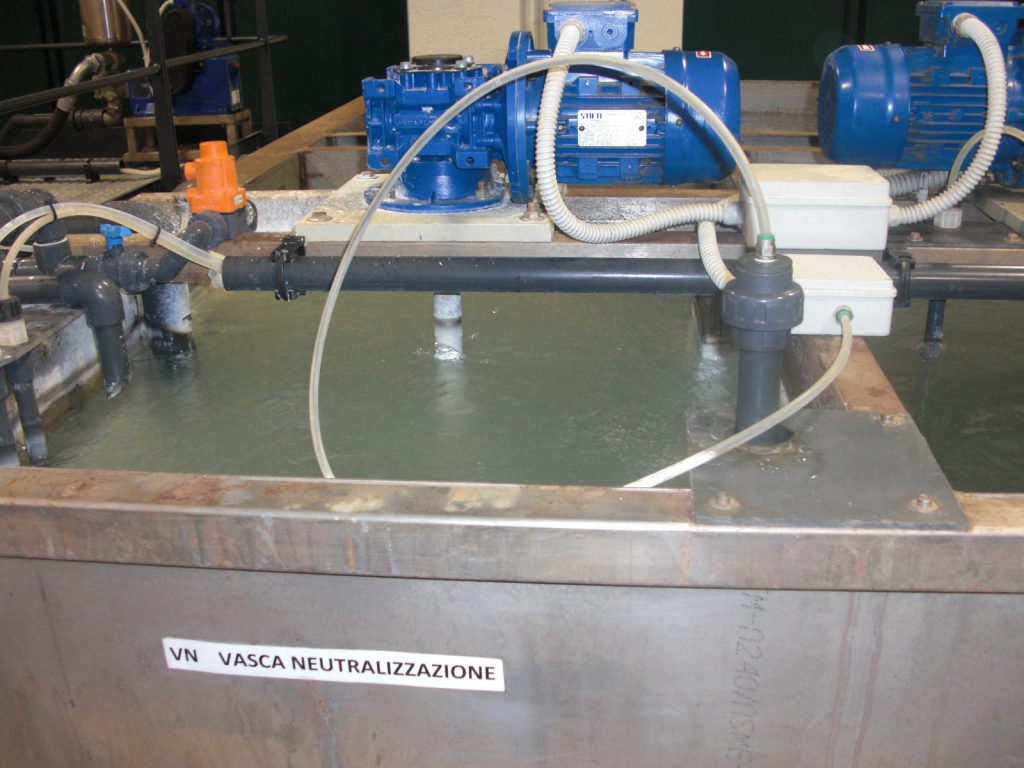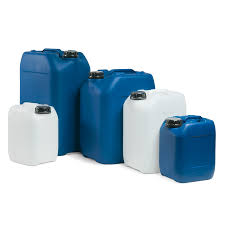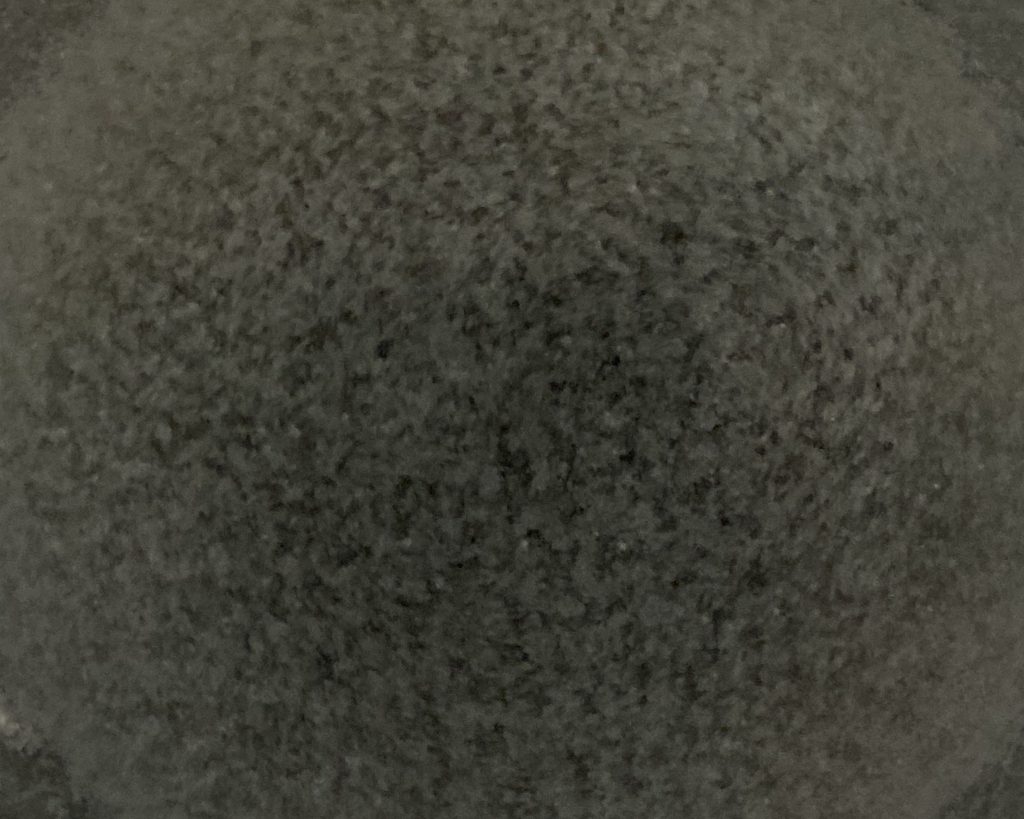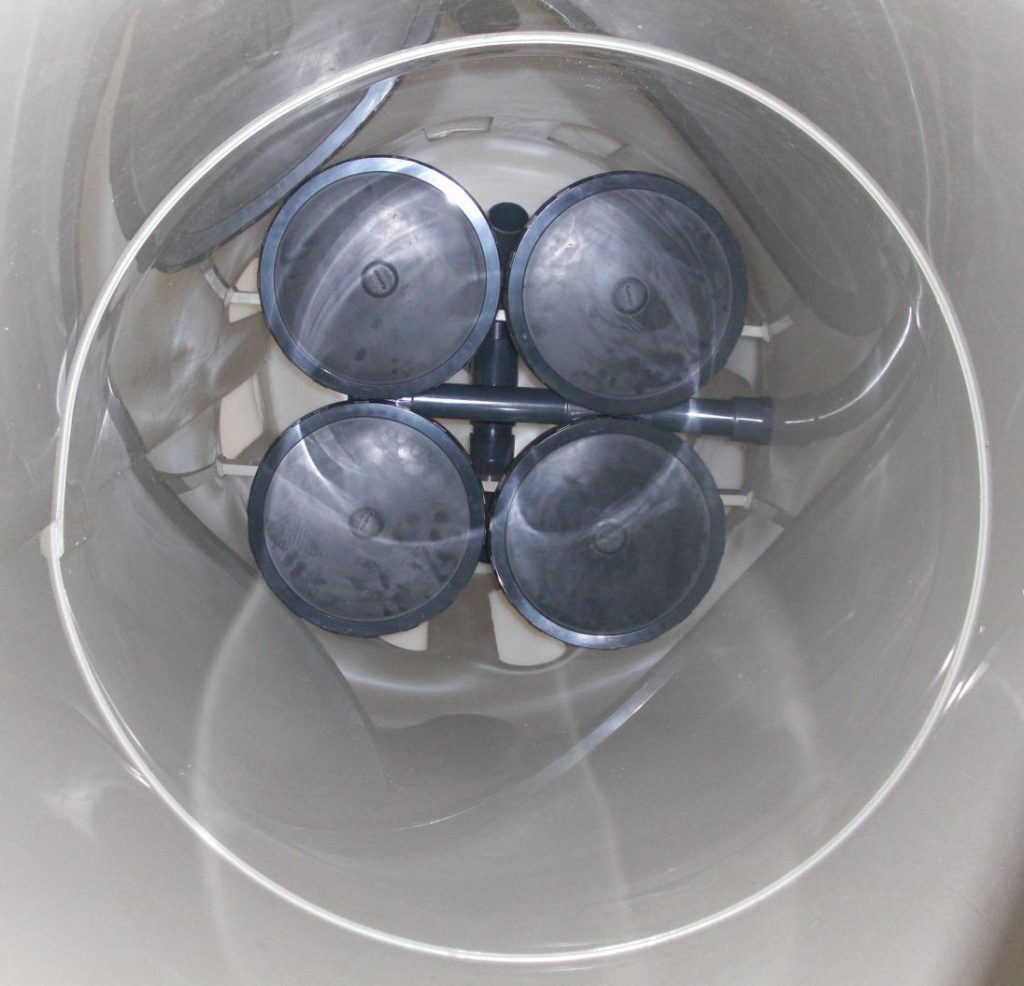The wastewater treated by a chemical-physical plant, when it reaches the flocculation section, is added to the polyelectrolyte reagent that makes the sludge flakes insoluble to water and with a high specific weight.
This flocculation section allows to increase and force the physical separation of the pollutant from the water, the chemical-physical purification plants use powdered anionic polyelectrolytes that must be previously prepared and dissolved.
It is important to carry out during the Jar-test start-up phase to identify the best type of polyelectrolyte, a correct flocculation must use an anionic or cationic polyelectrolyte with the optimal cohesion force to the water to be treated in order to achieve a stable and heavy flocculation in the treatment system.
This sometimes poorly considered flocculation phase has a very positive influence on the subsequent dewatering of the sludge, resulting in higher dry residues and optimizing the costs of purification disposal.

